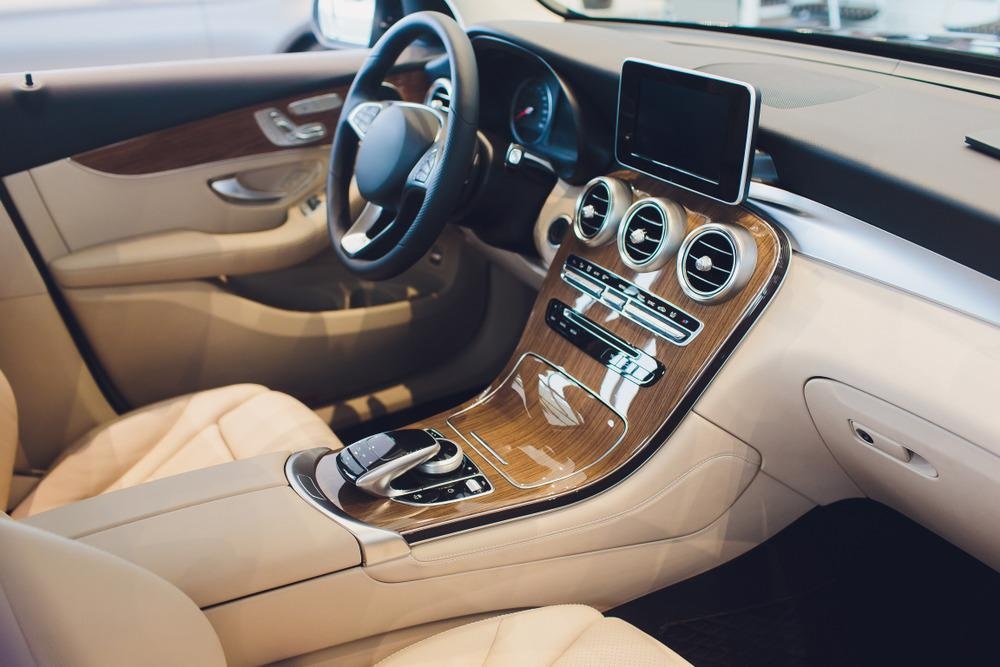
Image Credit: Vershinin89/Shutterstock.com
The G+BOARD project by the Europe-based Graphene Flagship consortium is dedicated to developing a graphene-based, metal-free automotive instrument board and steering wheel that enhance performance, reduce manufacturing costs, and decrease fuel costs for customers. The planned dashboard, dubbed G+BOARD, will have conductive circuits, sensors, and physical devices made from graphene or reduced graphene oxide, replacing the copper-based wires and metal controls currently utilized in automotive dashboards.
The G+BOARD: What is it?
The dashboard is expected to offer a distinctive user experience while supporting a high level of quality. It is not expected to increase the sticker price of vehicles, as simplified assembly operations would keep costs down.
Unlike currently available dashboards, most of which use metal, a graphene-based instrument panel would not considerably add to vehicle’s overall weight. With the automotive sector looking for approaches to lessen fuel usage and carbon emissions, a noteworthy decrease in weight would mean major sustainability advances for the entire industry.
The G+BOARD's intricate electrical systems will be crafted by a laser writing technique on polymer-based materials. This process helps lower the weight of components and makes them easier to recycle. The technique is expected to permit multi-purpose parts that are completely recyclable and built completely out of thermoplastic resin and carbonaceous filler material.
The Benefits of Graphene in Automotive Applications
Graphene’s high conductivity and visual transparency make it a valuable material that could be used in several types of user interfaces, which typically consist of liquid-crystal displays (LCDs) and touchscreens. These kinds of interfaces have been increasingly showing up in the dashboards of new vehicles. A touchscreen interface is fast becoming just as important to drivers and passengers as driving performance, comfort and safety features.
Given the proliferation of this technology, the volume of content being provided to screens in commercial vehicles is projected to grow. Amazon and Google are reportedly creating products intended for autonomous vehicles, as future riders are predicted to increasingly desire options for on-the-go visual content. To this end, flexibility is a major feature of graphene and can be used to make curved touchscreens. This quality allows for a wide range of new possibilities for viewing content in an automotive dashboard.
Taking metal out and replacing it with something lighter has benefits for the entire lifetime of a vehicle, including lower fuel consumption and easier recycling processes, the latter of which benefits the automotive sector largely. When it comes to meeting ambitious environmental goals, the substitution of graphene for metal is a small step, but a valuable one.
The Graphene Flagship Spearhead Projects
The G+BOARD project is one of eleven such projects from Graphene Flagship. These "Spearhead" projects are several scientific endeavors that hope to make graphene more commercially viable. As with other Spearhead projects, the G+BOARD project involves a number of institutional and corporate members, including automotive giant Fiat Chrysler, the National Research Council of Italy, and The University of Cambridge.
The Spearhead Projects are intended to develop actual products to bring to market, and a final G+BOARD product is slated for launch at the conclusion of development. When completed, several dashboard prototypes will be built into a concept vehicle and provided to Fiat Chrysler for acceptance.
In 2020, the G+BOARD project outlined technical specifications for the final group of components, determining which materials are essential as per their planned applications and targets. The project also developed novel polymer compounds based on graphene and layered materials. Evaluation and characterization analyses of these materials were also conducted during this time.
Improving Display Technology
The inclusion of a touchscreen display and other “smart” feature adds more motivation to the development of a graphene dashboard. Most touchscreens are currently made with indium tin oxide, which is both costly and rigid. Graphene is a much cheaper option and is highly flexible.
In the course of being used, touchscreens may be subjected to various physical stresses, such as the contact stresses from an operator’s finger or stylus. In a vehicle, touchscreens are exposed to unique types of stress, and could possibly experience traumatic stress in the event of an accident. As a result, it is very important to consider the overall physical durability of a touchscreen display.
Proven to be viable as a transparent conductor for touchscreens, graphene provides plenty of advantages, including physical flexibility and high structural integrity. It also has higher chemical stability, can be used in many different fabrication techniques, and has low absorption across a broad spectral range. At the present time, the most promising form of graphene for conductive transparent films is large-area continuous polycrystalline graphene.
Resources and Further Reading
Graphene Flagship. G+BOARD: Predicting the Car of the Future. [Online] Available at: https://graphene-flagship.eu/innovation/spearheads/c3-sh02-gboard/
Broderick, T. Cars Made of Graphene (Well, Almost!). UDL Intellectual Property. [Online] Available at: https://www.udl.co.uk/insights/cars-made-of-graphene
Anagnostopoulos, G. et al. Mechanical Stability of Flexible Graphene-Based Displays. ACS Applied Materials & Interfaces. [Online] Available at: https://www.ncbi.nlm.nih.gov/pmc/articles/PMC5022774/
Disclaimer: The views expressed here are those of the author expressed in their private capacity and do not necessarily represent the views of AZoM.com Limited T/A AZoNetwork the owner and operator of this website. This disclaimer forms part of the Terms and conditions of use of this website.